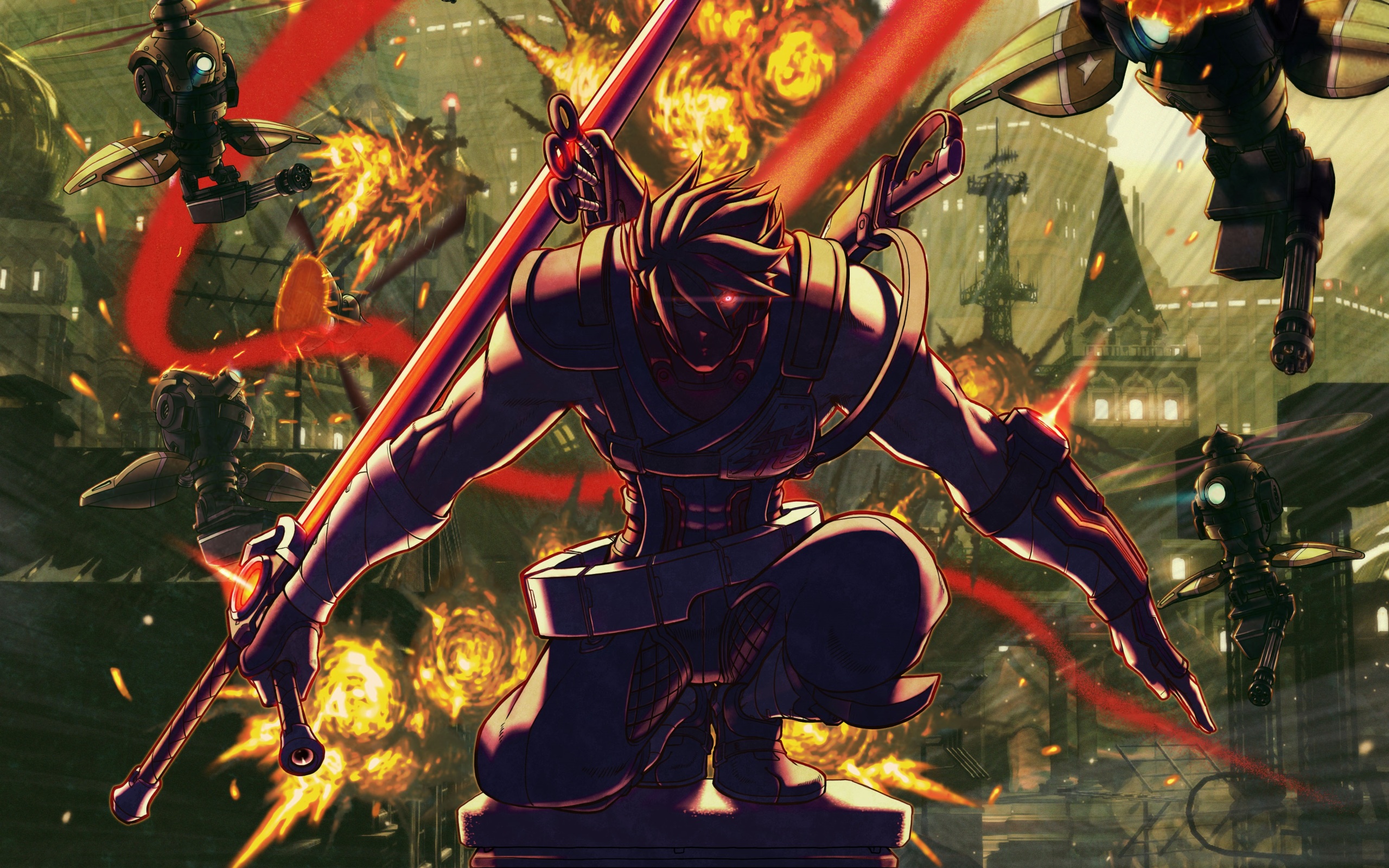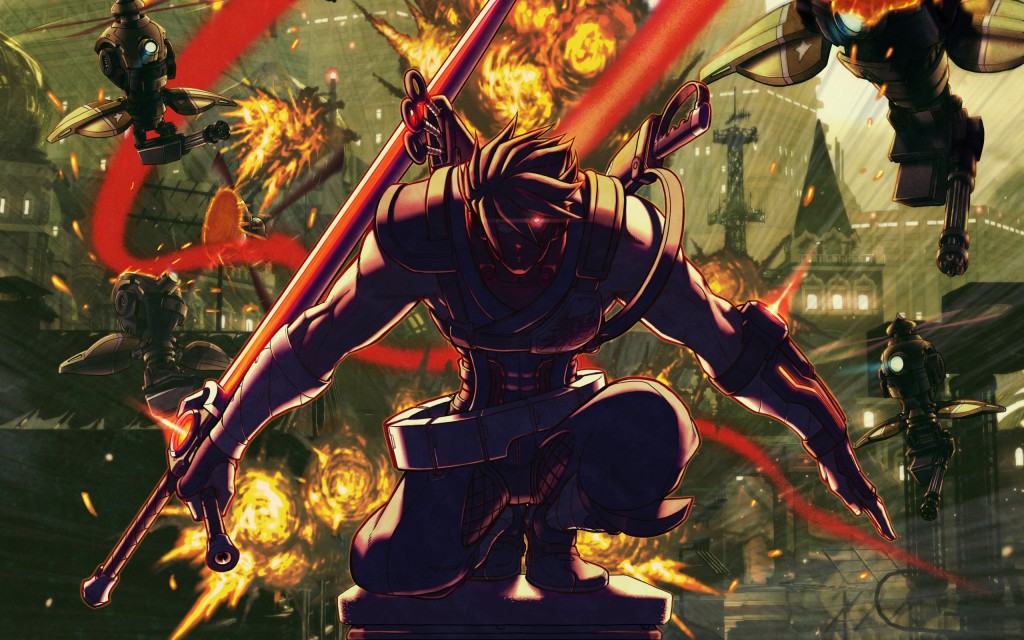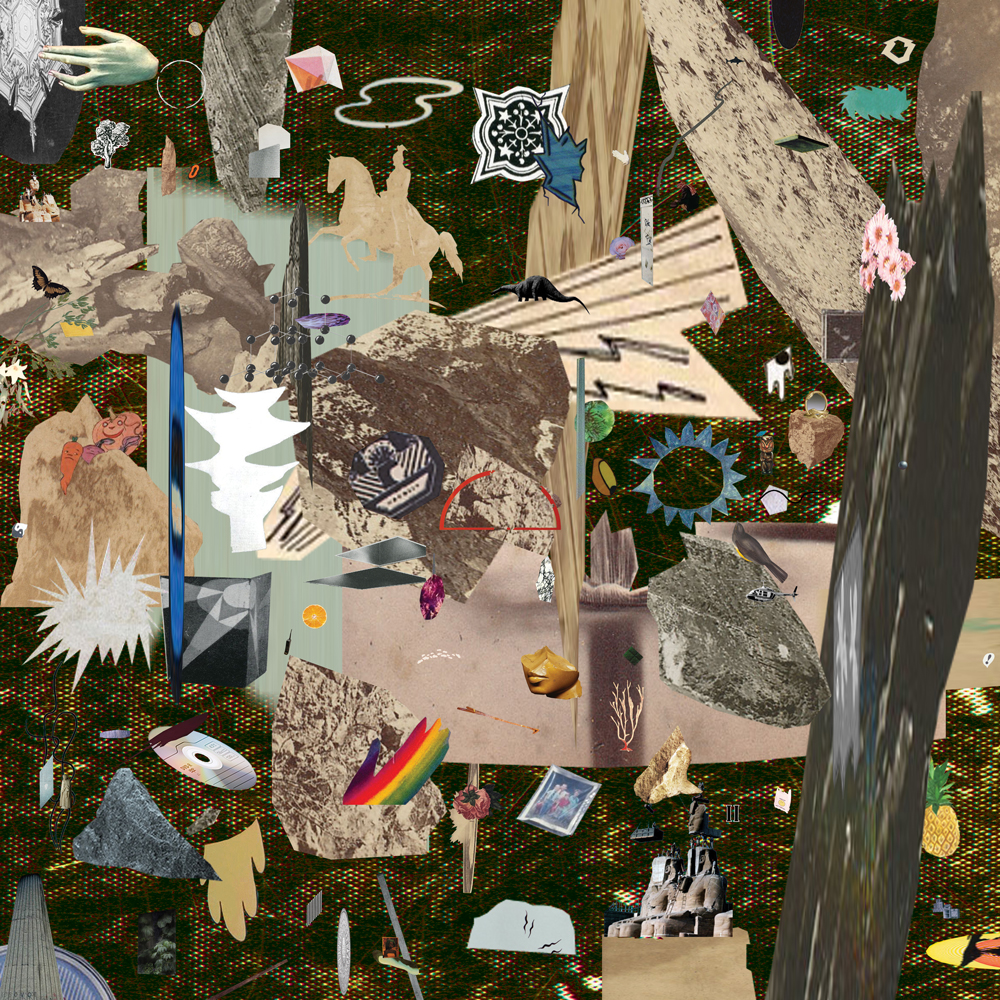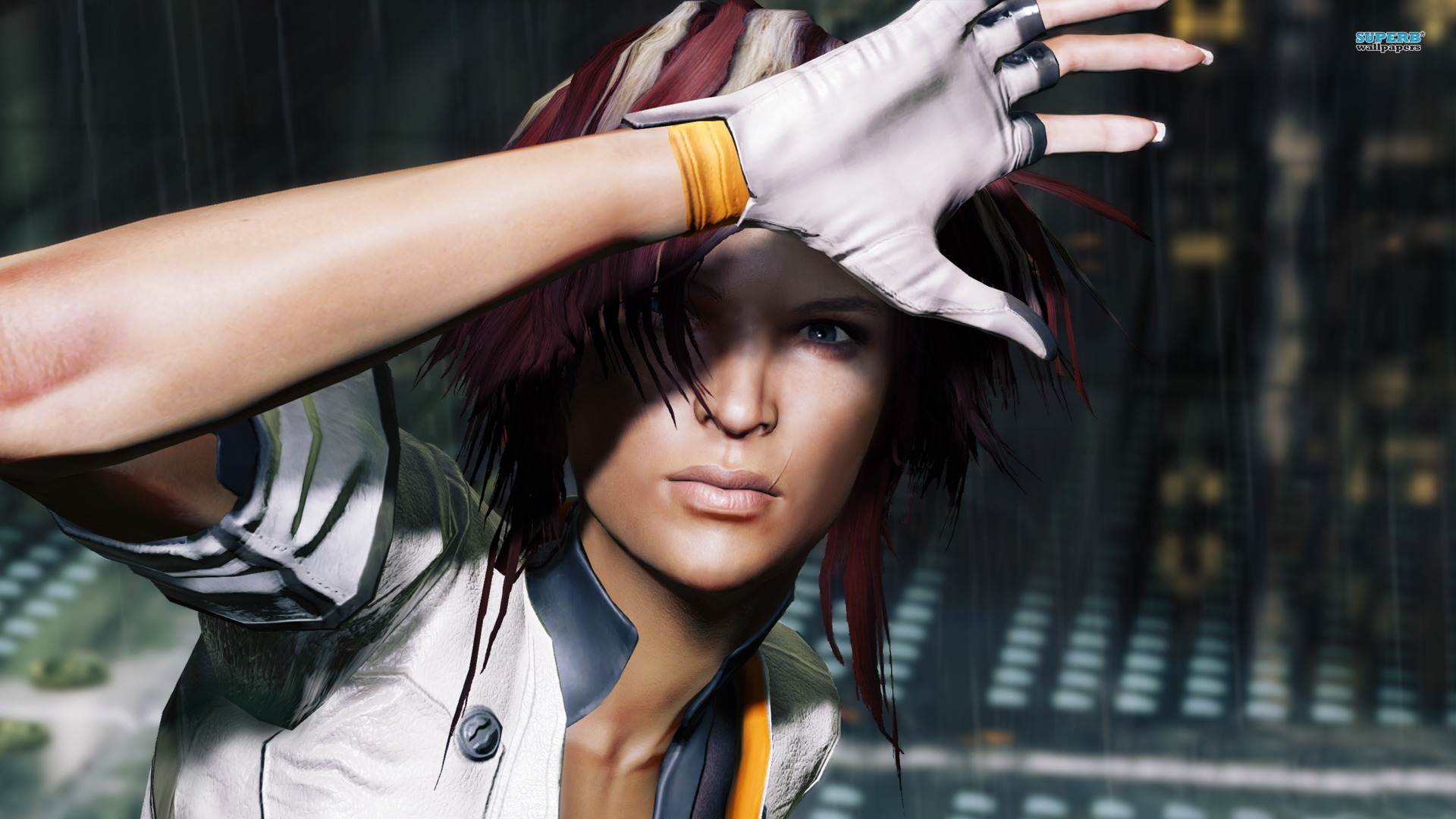The original Strider, in both its arcade and subsequent home console appearances, was a truly bonkers title, the kind of which only a company like Capcom could make. Their trademark gonzo dialogue and hyperbolic violence were all over this everyday tale of a souped-up ninja battling through a dystopian Soviet Republic. It’s not often that you see those words in the same sentence, nor do you encounter an anthropomorphic millipede end of level boss wielding a hammer and sickle. Such curios were common in Strider, an odd yet brightly coloured side-scroller with inventive character design and a real sense of speed and weightlessness. Protagonist Hiryu was a nimble little beggar, and his acrobatic antics and dab hand with all manner of slicing, dicing weapons made him a forerunner to Bayonetta (Sega, Multi).
It is with some trepidation that one approaches the new version of Strider, helmed by Double Helix Games, and whether they will manage to capture the same retro spirit channeled through, for example, the recent port of Duck Tales. This new outing isn’t a remake per se, as it jiggers around with the format to mould it into a Metroidvania style title: certain areas of the game remain inaccessible, hidden tantalisingly behind locked coloured doors until you obtain the right upgrades or weapons. It necessitates, as this subgenre often does, a fair bit of backtracking and exploration, bringing to mind the really rather good Shadow Complex (Chair, XBLA).
The new Strider has several qualities that are easy to praise. Once again Hiryu looks great: sleek, colourful and leaping around the screen like an E-numbered toddler. The controls are responsive and intuitive, and the progression from a slightly weak young buck to a fully tooled badass is very satisfying. The bosses too, are memorably weird (a mechanical gorilla and a robotic snake being two of the more normal ones), and challenging without being frustrating. It doesn’t take too long to figure out the best strategy to knock them off their perch.
Less impressive is the limited range of level design. Whereas the original Strider had a range of environments, this outing reuses the same rooms and backgrounds over and over, which leads to a crucial problem for gameplay: it’s difficult to remember how to navigate your way round a zone when all the subsections look exactly the same.
Those quibbles aside, Strider is a welcome addition to the franchise, one of those gems which you only get on the Playstation Store or the Xbox Marketplace. It may not have the bombast of your average Call Of Duty clone yet it is fun, addictive and at times, notably the upside down gravity-based levels, inventive. Those qualities count for a lot. Ross Thompson







